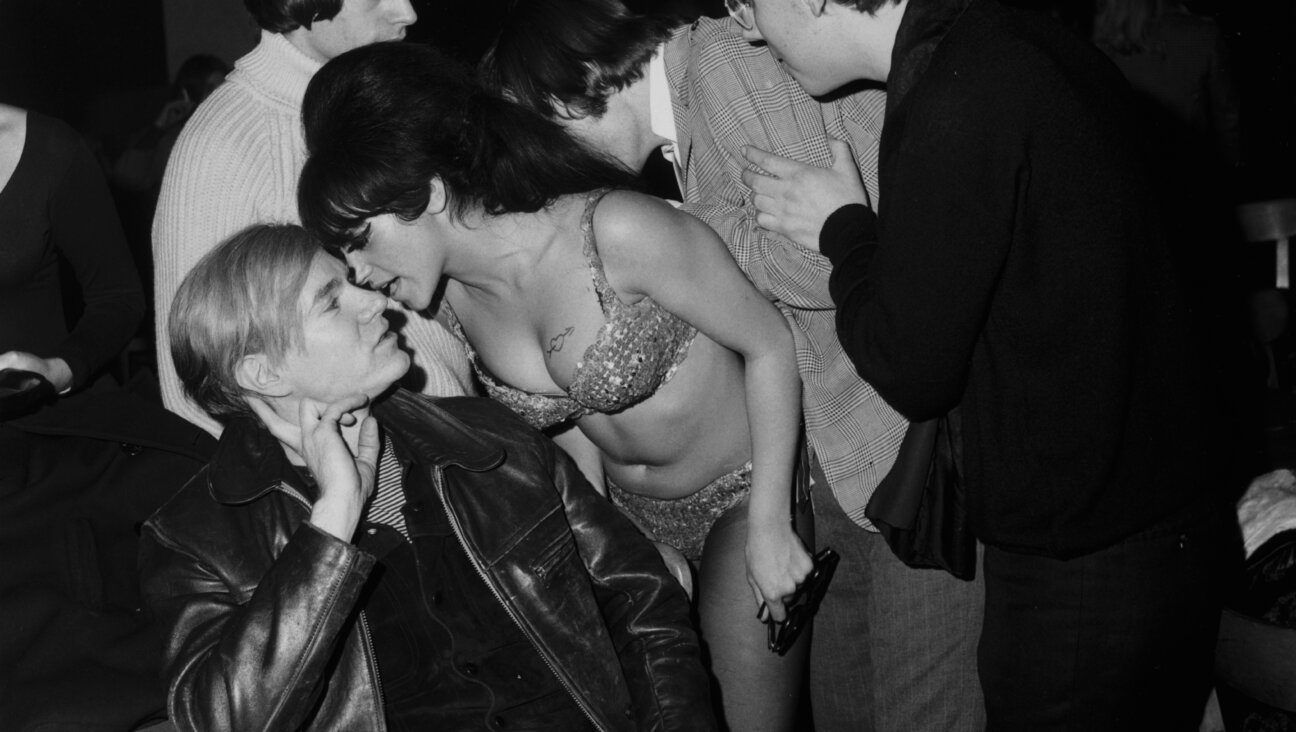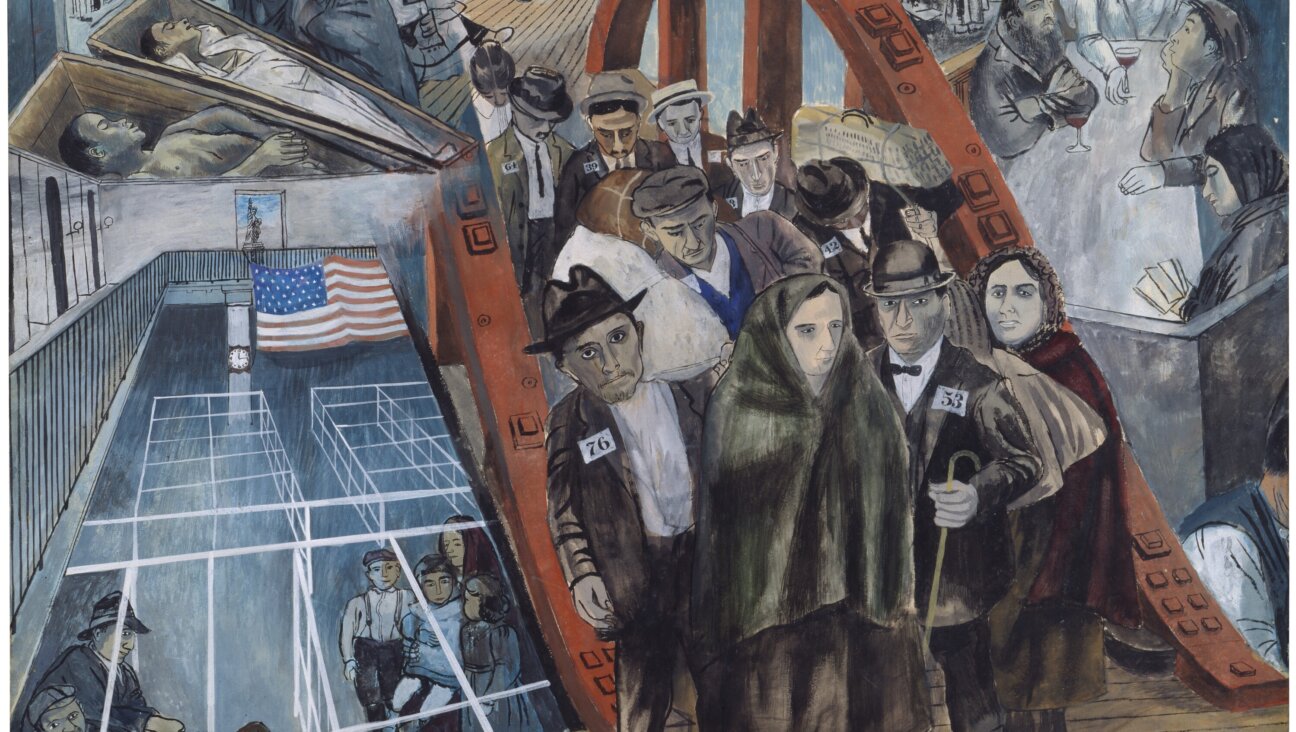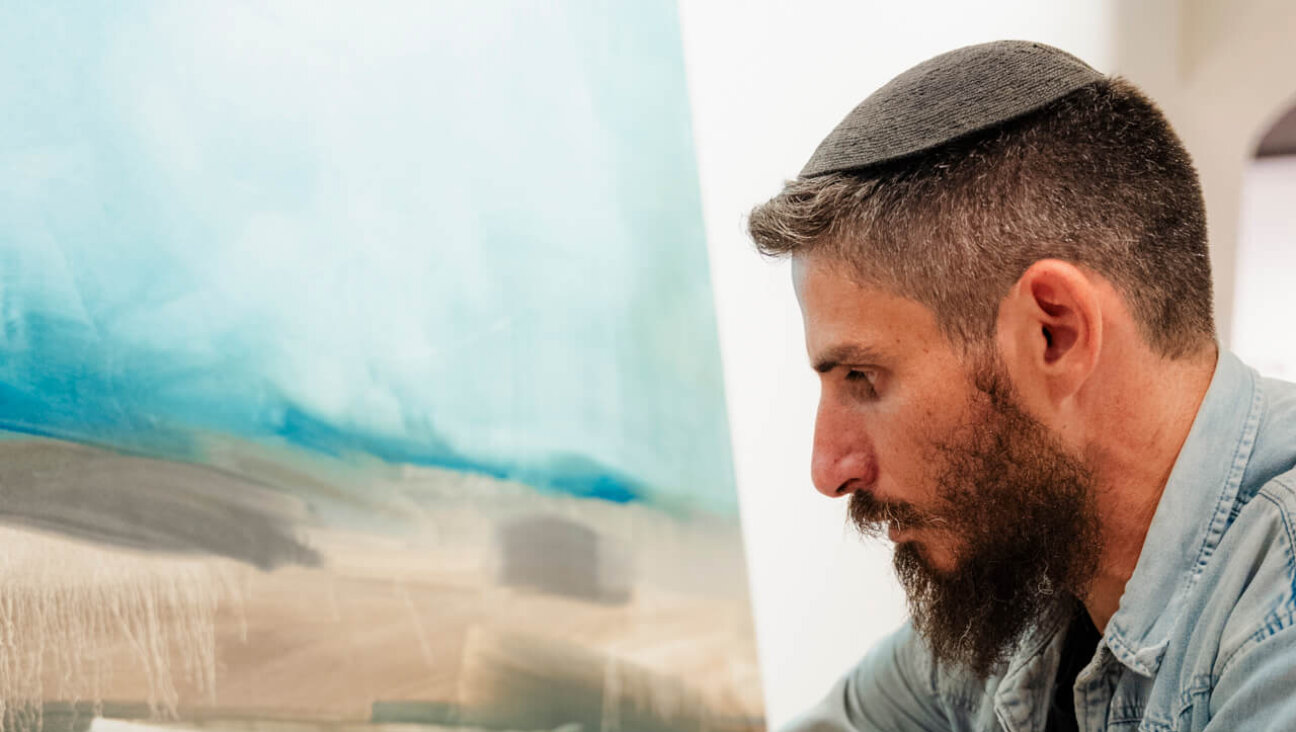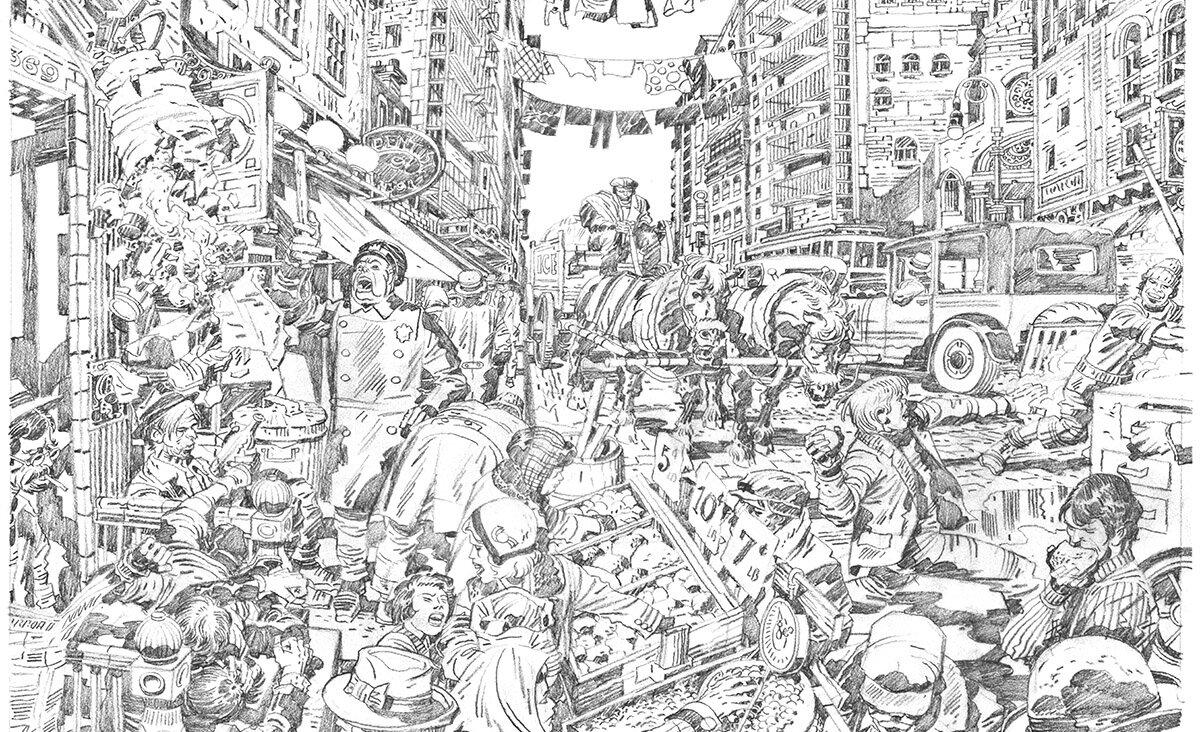How A New Mexico Jewish Couple May Have Pulled Off A $160 Million Art Heist

At the Royal Academy of Arts, London, a member of staff poses next to paintings by Dutch American artist Willem de Kooning entitled ‘Woman’ (L), ‘Woman II’ (C) and ‘Woman as Landscape.’ Image by Getty Images/Carl Court/Staff
It appears that Jewish couple Rita and Jerry Alter walked away from a 1985 trip to an Arizona museum with quite the souvenir.
After Rita’s death in 2017, the Alters’ home in New Mexico was found to contain a long-lost Willem de Kooning painting, worth $160 million, yet no evidence had previously linked them to its disappearance. Now, The Washington Post reports that a recently discovered photograph of the couple places them in Tucson a day before the artwork was stolen from the University of Arizona Museum of Art.
The snapshot, uncovered by the Alters’ nephew Ron Roseman, suggests the mild-mannered spouses may have pulled off a heist for the ages.
The painting, titled “Woman – Ochre,” is part of the late abstract expressionist de Kooning’s “Woman” series. It went missing from the museum on November 29, 1985, the day after Thanksgiving.
Around 9 a.m. on that day, a security guard opened the front doors for a staff member. A man and a woman followed the employee in, museum curator Olivia Miller told NPR in 2015.
Because it was shortly before the museum’s opening, the two visitors were allowed to roam the gallery. On entering, the pair climbed the stairs, trailed by a guard, but in the middle of the stairway the woman stopped to ask him a question while her companion continued to the second floor. A short time later, the pair descended from the upper level.
The security guard thought their visit, which lasted about 15 minutes, was a little rushed, NPR reported, but when he made his way up to the second floor his worst fears were realized. The frame holding the de Kooning, one of the jewels of the museum, was empty, the painting cut away from its border.
In 1985, the museum didn’t have security cameras and police at the scene found no fingerprints. All that the authorities had to go on was a witness’ report of a rust-color sports car — the witness missed the license plate number — and a description of the couple.
“The woman was a bit older,” Miller told NPR. “She had a scarf around her head, was wearing glasses. The man had dark hair, had a mustache.” The museum collected $400,000 in insurance for the stolen painting, and left its vacant frame hanging in the museum until its return in 2017. Meanwhile, composite sketches of the male and female subjects were circulated by the police, who picked up no leads.
The Arizona Republic, which broke the story of the newly discovered photo of the Alters, noted a resemblance between the people in the photograph and those depicted in the sketches.
The New York Times however, posited that the sketch of the man, who witnesses reported looked younger than his female partner, resembled Jerry and Rita’s son Joseph. He was 23 at the time of the de Kooning’s disappearance.
But why would the Alters, in any configuration, embark on such a heist?
Roseman told Houston’s ABC13 that the family “were just nice people.” Former coworkers of Rita’s recalled her as “pleasant but quiet.” She and her husband shared a love of travel and art.
The Alters moved to New Mexico from New York in the late 1970s or early 1980s, while they were in their 50s, according to the Silver City Daily Press. Jerry, a retired school music teacher, mocked up blueprints for their ranch-style house in the tiny town of Cliff, while Rita found work as a speech pathologist in the local school district. Among their favorite hobbies were visiting art museums and co-authoring books.
In one such collaboration, 2011’s “Aesop’s Fables Set in Verse” Jerry describes himself in an “about the author” blurb as having visited “over 140 countries on all continents, including both polar regions.”
Another of their books, “The Cup and The Lip: Exotic Tales,” a collection of short stories centered on travel, features the story “The Eye of the Jaguar,” which details the theft of an emerald by a grandmother and her teenage granddaughter.
The story resembles the de Kooning theft, and the Alters’ jet setting lifestyle raised the suspicions of The Washington Post.
“Jerry and Rita Alter worked in public schools for most of their careers,” the Post wrote. “Yet they somehow managed to travel to 140 countries and all seven continents, documenting their trips with tens of thousands of photos.”
After Rita Alter’s death in June 2017, following Jerry Alter’s in in 2012, the couple’s estate was appraised by antique dealers from nearby Silver City, who offered up $2,000 for what they saw, including the de Kooning. Beyond their physical assets, the Alters’ bank account contained over $1 million.
“I guess I figured they were very frugal,” Roseman, who was the executor of their estate, told Dallas-based station WFAA.
No one knows where the money came from. It wasn’t the only suspicious thing that turned up in the months since.
Photographs of Rita wearing a red coat that matches witness reports of the woman suspect’s clothing were found among the Alter’s belongings, along with a scarf and glasses similar to those the suspect was reported to be wearing. In addition, a meticulously kept day planner for the year 1985 was found with the entry for Thanksgiving left conspicuously blank, New Mexico’s KOB 4 reported.
We may never know what was planned on that fateful Thanksgiving Day, but the newly unearthed photo lets the record show that the Alters enjoyed it under the Tucson sun.
PJ Grisar is the Forward’s culture intern. He can be reached at [email protected].
























